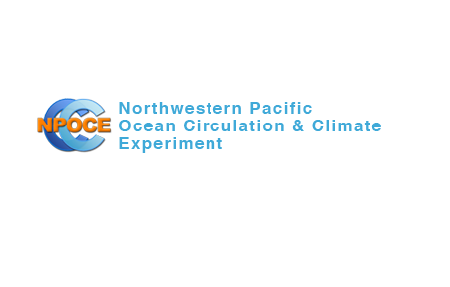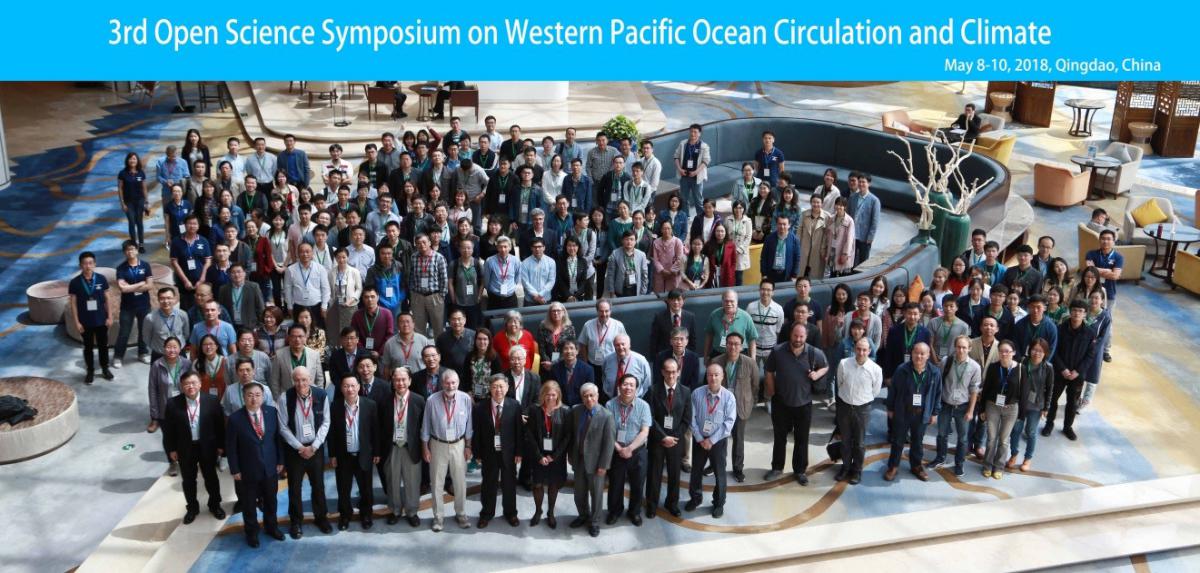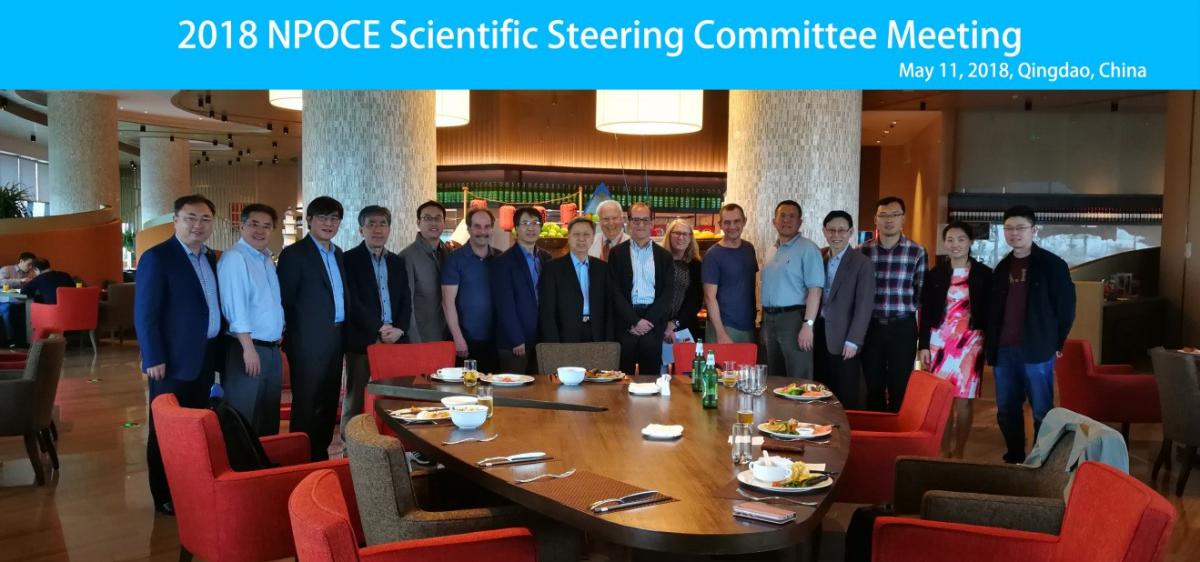Recent progress of NPOCE (2017-2018) - a CLIVAR endorsed project

NPOCE WEBSITE: http://npoce.org.cn/
Northwest Pacific Ocean Circulation and Climate Experiment (NPOCE) program is the first international collaboration program in Oceanography initiated by China, and it is joined by 19 institutions from 8 countries, such as China, United States, Japan, Australia, South Korea, Indonesia, Philippine, etc. In nearly 8 years since NPOCE was endorsed by CLIVAR in 2010, dramatic progress has been made through collective efforts of scientists in this program. NPOCE has built a large regional scientific observing network in the tropical Western Pacific Ocean and Indonesian seas, with these efforts in field observations, NPOCE community has significantly advanced scientific research, confirmed findings from the past and discovered new phenomena. In the past few years,
- Observation
Through the western Pacific joint cruise with Philippine and ITF joint cruise with Indonesia of 2017-2018, NPOCE recovered 21 deep ocean subsurface moorings and deployed 30 subsurface moorings and 2 buoys in the western Pacific. 10 of the 30 subsurface moorings has real-time transmission function, which is the first real time deep ocean scientific observation network in the western Pacific, the temperature, salinity and velocity data in the upper 1000m of the western Pacific are transmitted every there hours. Also, the currents system of the tropical western Pacific was fully covered for the first time by subsurface moorings.
Combined with Iridium Argo floats, surface drifters, CTD/LADCP station, VMP, XCTD, multi-net sampling, ship-board ADCP, automatic meteorology station, air-sea flux, multi-beam scan observations, the cruise provided data support for studies on the 3D structure and multi-scale variability of the western Pacific Ocean circulation and warm pool, for the validation and improvement of ocean numerical models. Above efforts have spearheaded the world's observational study of the western Pacific Ocean circulation and have consolidated the leadership of China in the NPOCE international collaboration program.
- Meetings
- The 3rd Open Science Symposium on Western Pacific Ocean Circulation and Climate was held successfully in Qingdao China during May 08-10, 2018. This symposium was organized by the Northwestern Pacific Ocean Circulation and Climate Experiment (NPOCE) program, and hosted by Institute of Oceanology, Chinese Academy of Sciences (IOCAS). Around 300 scientists from 10 countries including China, United States, Australia, Japan, South Korea, India, etc. attended the meeting, exchanged recent progress, and discussed remained scientific issues on the western Pacific Ocean circulation and climate study.

The 3-day symposium has 67 oral presentations, including 11 keynote speeches and 23 invited talks, 75 scientists presented their work with posters. Focusing on the multi-discipline studies in the western Pacific, scientists attending the symposium introduced their recent research progresses and projects. On the basis of achievements since the inauguration of NPOCE, scientists discussed the future plan of NPOCE in the next couple of years. They agreed on continuing to strengthen collaborations among member countries and institutions, especially on joint cruises and data sharing. In future years, the international community of oceanography will work on the multi-spherical interaction in the Indo-Pacific convergence zone, focusing on themes including: multi-scale dynamic process in the deep ocean, air-sea interaction, geology and warm pool formation, biological diversity in the convergence zone. Through multi-national, multi-disciplinary and comprehensive in-situ observations and studies, the community aimed to accomplish ground-breaking achievements in the multi-spherical interaction field over the Indo-Pacific convergence zone.
- The Scientific Steering Committee (SSC) of NPOCE held its 2018 annual meeting in the Qingdao National Laboratory for Marine Science and Technology, Qingdao, China on May 11, 2018. The meeting was attended by more than 20 scientists from China, United States, Australia, Japan, and Korea, including 13 SSC members, and Jose Santos, the Executive Director of International CLIVAR Project Office. On behalf of the CLIVAR community, Jose Santos expressed appreciation to NPOCE for its significant contribution to CLIVAR in western Pacific Ocean circulation and climate study.

The meeting confirmed the new SSC membership Janet Sprintall from Scripps Institution of Oceanography. 12 reports were delivered by SSC members to elaborate the progress since last SSC in 2017. The SSC discussed and agreed upon a proposal to develop a Best Practices paper for special edition in Frontiers of Ocean Science or other publication (e.g. BAMS, JAOT etc), towards an integrated strategy for observing Pacific low latitude western boundary currents, and consider an NPOCE review paper for CLIVAR Exchange or Progress in Oceanography. The SCC suggested the next SSC meeting to be held in September 2019 in Hawaii, USA and the 4th Open Science Symposium (OSS) on Western Pacific Ocean Circulation and Climate to be held in November 2021 in Xiamen or Malaysia.
- Publication
Mooring measurements at the Maluku Channel during December 2012–November 2016 show that mean transport through the upper Maluku Channel is about 1.04–1.31 Sv northward (Yuan et al., 2018). A sandwich structure of the tropical meridional overturning circulation (TMOC) is revealed between 0°-6°N, consisting of surface poleward flow, thermocline convergence between 100-300 m, and subthermocline divergence between 300-500 m from seven subsurface moorings deployed at 142°E during August 2014-October 2015 (Song et al., 2018). In conjunction with satellite and reanalysis data, prominent seasonal-to-interannual variations were observed in all the three layers, and the equatorial zonal winds were found to be dominant in causing these variations. The TMOC is generally stronger in boreal winter and weaker in summer. The TMOC was greatly weakened by westerly wind anomalies associated with the El Niño condition during 2014-2015. Further analysis suggests that the TMOC can affect equatorial surface temperature in the western Pacific through anomalous upwelling/downwelling and likely play a vital role in the ENSO (Song et al., 2018).
A subsurface mooring deployed at 8°N, 127°3′E shows that the mean currents at 1200 and 3500 m flow northward, whereas those at 2500 and 5600 m flow equatorward. The power spectral density (PSD) shows that an intraseasonal signal of 60–80 days is common from the sea surface to the bottom. The semiannual signals are strongest in the MUC layer, and the amplitude then decreases with depth to 3500 m. The seasonal variability at 2500 and 5600 m is similar (Wang et al., 2017). The strong westward flowing NEC ranges from the sea surface down to 400 m, and the mean zonal velocity of the NEC at 10.5°N is around −30 cm/s at the depth of 70 m. Eastward flowing NEUC jets are detected below the NEC at 10.5°N and 13°N, and the depth of the NEUC could reach at least 900 m. The mean velocity of the NEUC is around 4.2 cm/s at 800 m. The mooring measurements also reveal a strong intraseasonal variability of the currents at all 4 mooring sites, and the period is around 70–120 days (Zhang et al., 2017). Period of intra-seasonal oceanic variability in the tropical western Pacific Ocean increases with latitude and is symmetrical about the equator (Hu et al., 2018). Observed oceanic ISV is associated with westward propagating mesoscale eddies and intraseasonal Rossby waves due to dynamic instabilities (Hu et al., 2018). The MJO is an important forcing in shaping the oceanic ISV in the tropical western Pacific Ocean through baroclinic ocean wave responses to intraseasonal wind stress forcing (Hu et al., 2018).
The transition scale from balanced geostrophic motions to unbalanced wave motions, including nearinertial flows, internal tides, and inertia–gravity wave continuum, is explored using the output from a MITgcm simulation. The transition scale defined as the wavelength with equal balanced and unbalanced motion kinetic energy (KE) spectral density is detected to be geographically highly inhomogeneous: it falls below 40 km in the western boundary current and Antarctic Circumpolar Current regions, increases to 40–100 km in the interior subtropical and subpolar gyres, and exceeds 200 km in the tropical oceans (Qiu et al., 2018).
Salinity variability in the ITF outflow region associated with fresh water input within the Indonesian seas is found to be an important factor that causes significant ITF variation on interannual to decadal time scales and further leads to warming and freshening trend in the eastern Indian Ocean during the past decade (Hu and Sprintall, 2017a, 2017b). The decadal variations of the zonally and vertically integrated meridional geostrophic transport in the interior tropical North Pacific Ocean are found to precede the Pacific decadal oscillation (PDO) by 1–3 years, but the Sverdrup transports differ from the meridional transport significantly probably due to nonlinearity (Zhou et al., 2018). Based on the outputs of 25 models participating in the Coupled Model Intercomparison Project Phase 5, the projected changes of the wind‐driven circulation in the low‐latitude north‐western Pacific are evaluated (Duan et al., 2017). Results demonstrate that there will be a decrease in the mean transport of the North Equatorial Current (NEC), Mindanao Current, and Kuroshio Current in the east of the Philippines, accompanied by a northward shift of the NEC bifurcation Latitude (NBL) off the Philippine coast with over 30% increase in its seasonal south‐north migration amplitude, due to the robust weakening of the north‐easterly trade winds and the associated wind stress curl under the El Niño‐like warming pattern (Duan et al., 2017). Coral δ18O records from the central Makassar Strait suggest persistent seasonal freshening and also years with significant truncations of seasonal freshening that correlate exactly with South Pacific Convergence Zone (SPCZ) zonal events >4000 km to the east. During these events, the SPCZ dramatically rotates ~15° north to near the equator and stronger westward flowing South Pacific boundary currents force higher-salinity water through the Makassar Strait in February–May halting the normal seasonal freshening in the strait (Linsley et al., 2017).
Sea surface temperature structure inside the western Pacific warm pool (WPWP) is usually of distinct homogeneity, but it is found that the WPWP significantly splits into two parts, which is named WPWP split phenomenon (Hu et al., 2017c). Oceanic dynamics related to enhanced upwelling and western propagating upwelling Rossby waves account for the WPWP split, which seems to intensify the following El Niño events (Hu et al., 2017c).
Significant progress has been made in the field of climate change research. The Paris Agreement aims to constrain global mean temperature (GMT) increases to 2 oC above pre-industrial levels, with an aspirational target of 1.5 oC. However, the impacts of a 1.5 oC and 2 oC warming on extreme El Niño, La Niña and positive Indian Ocean Dipole (pIOD) events-which severely influence weather patterns, agriculture, ecosystems, public health and economies-is unclear. Based on CMIP5 multi-model outputs, Wang et al. (2017) and Cai et al. (2018) demonstrated that both the frequency of extreme El Niño and pIOD increases linearly with the GMT towards a doubling at 1.5 oC warming. The increasing frequency of extreme El Niño events continues for up to a century after GMT has stabilized, on contrast, the extreme pIOD frequency peaks as the GMT stabilizes. The former is underpinned by an oceanic thermocline deepening that sustains faster warming in the eastern equatorial Pacific than the off-equatorial region, and the latter is due to a muted change in the west-minus-east zonal SST gradient of equatorial Indian ocean. On the other hand, the frequency of extreme La Niña exhibits no change under 1.5 oC or 2 oC warming.
Regarding to the projected frequency increase of extreme El Niño, it remains unclear whether this is a consequence of the mean rainfall increase. Cai et al. (2017) examined the definition of extreme El Niño and fond that the increased frequency results from increased probability of atmospheric deep convection in the eastern equatorial Pacific. The projection is also robust using vertical velocity to define an extreme El Niño.
The Western Pacific Warm Pool (WPWP) plays an important role in the global climate through modulating deep convections, ENSO, monsoon onsets, etc. Jia et al. (2017) found that the Nino4 sea surface temperature (SST) index captures the interannual variability of the WPWP well, with the Nino4 SST explaining approximately half of the variance of the WPWP heat content and almost all the variance of the east-west migration of the WPWP. Their results indicate that the Nino4 SST can efficiently estimate the interannual WPWP changes and a reliable predictor of the onset time of the South China Sea summer monsoon and Bay of Bengal summer monsoon, without the need to calculate the eastern boundary location and heat content of the WPWP.
For more information about NPOCE, please refer to NPOCE WEBSITE: http://npoce.org.cn/
(Written by Linlin Zhang, Shijian Hu, Fan Jia and Yixin Ma from NPOCE)
References
Cai, W. et al. (2018), Stabilised frequency of extreme positive Indian Ocean Dipole under 1.5 °C warming. Nature Communication, 9, 1419. DOI: 10.1038/s41467-018-03789-6.
Cai, W., Wang, G., Santoso, A., Lin, X. and Wu, L. (2017), Definition of extreme El Niño and its impact on projected increase in extreme El Niño frequency. Geophysical Research Letters, 44, 11,184-11,190. https://doi.org/10.1002/2017GL075635.
Duan, J., Z. Chen, and L. Wu (2017), Projected changes of the low‐latitude north‐western Pacific wind‐driven circulation under global warming, Geophysical Research Letters, 44, 4976–4984, doi:10.1002/2017GL073355.
Hu, S., and J. Sprintall (2017a), Observed Strengthening of Interbasin Exchange via the Indonesian Seas Due to Rainfall Intensification, Geophysical Research Letters, 44(3), 1448-1456, doi:10.1002/2016GL072494.
Hu, S., and J. Sprintall (2017b), A stronger Indonesian Throughflow Related to Enhanced Regional Rainfall, CLIVAR Exchanges, 71, 21-25.
Hu, S., D. Hu, C. Guan, N. Xing, J. Li, and J. Feng (2017c), Variability of the western Pacific warm pool structure associated with El Niño, Climate Dynamics, 49(7-8), 2431–2449, doi:10.1007/s00382-016-3459-y.
Hu, S., J. Sprintall, C. Guan, B. Sun, F. Wang, G. Yang, F. Jia, J. Wang, D. Hu, and F. Chai (2018), Spatio-temporal Features of Intra-seasonal Oceanic Variability in the Philippine Sea from Mooring Observations and Numerical Simulations, Journal of Geophysical Research: Oceans, 123, 4874-4887, doi:10.1029/2017JC013653.
Jia, F., Hu, D., Hu, S., and Feng, J. (2017), Nino4 as a key region for the interannual variability of the Western Pacific Warm Pool. Journal of Geophysical Research: Oceans, 122, 9299–9314. https://doi.org/10.1002/2017JC013208.
Linsley, B. K., H. C. Wu, T. Rixen, C. D. Charles, A. L. Gordon, and M. D. Moore (2017), SPCZ zonal events and downstream influence on surface ocean conditions in the Indonesian Throughflow region, Geophysical Research Letters, 44(1), 293–303, doi:10.1002/2016GL070985.
Qiu, B., S. Chen, P. Klein, J. Wang, H. Torres, L.-L. Fu and D. Menemenlis (2018), Seasonality in transition scale from balanced to unbalanced motions in the world ocean.J. Phys. Oceanogr., 48, 591-605.
Song, L., Y. Li, J. Wang, F. Wang, S. Hu, C. Liu, X. Diao, and C. Guan (2018), Tropical meridional overturning circulation observed by subsurface moorings in the western Pacific, Scientific Reports, 8, 7632, doi:10.1038/s41598-018-26047-7.
Wang, F., L. Zhang, D. Hu, Q. Wang, F. Zhai, and S. Hu (2017), The vertical structure and variability of the western boundary currents east of the Philippines: case study from in situ observations from December 2010 to August 2014, Journal of Oceanography, 73(3), 1-16, doi:10.1007/s10872-017-0429-x.
Wang, G. et al. (2017), Continued increase of extreme El Niño frequency long after 1.5 oC warming stabilization. Nature Climate Change, 7, 568-573.
Yuan, D., et al. (2018), Observed Transport Variations in the Maluku Channel of the Indonesian Seas Associated with Western Boundary Current Changes, Journal of Physical Oceanography, 48, 1803-1813.
Zhang, L., F. Wang, Q. Wang, S. Hu, F. Wang, and D. Hu (2017), Structure and Variability of the North Equatorial Current/Undercurrent from Mooring Measurements at 130°E in the Western Pacific, Scientific Reports, 7, 46310, doi:10.1038/srep46310.
Zhou, H., D. Yuan, L. Yang, X. Li, and W. Dewar (2018), Decadal Variability of the Meridional Geostrophic Transport in the Upper Tropical North Pacific Ocean, Journal of Climate, 31, 5891-5910.













